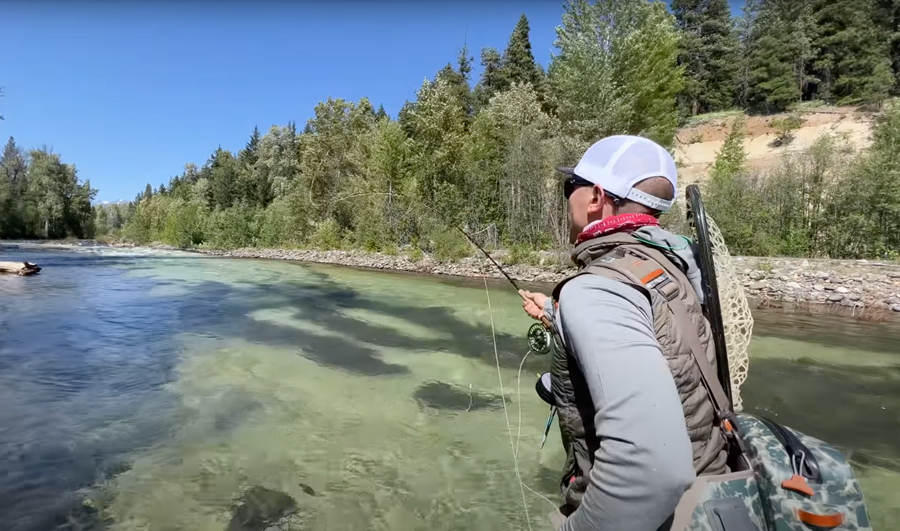Fly fishing upstream with dry flies presents a unique challenge – maintaining consistent fly presentation while minimizing false casts. The constant stripping of line can disrupt the delicate presentation and spook wary fish. Here, we explore the roll-cast pickup technique, a game-changer for efficient upstream dry-fly fishing.
The Challenge: Too Much Strip, Not Enough Fish
Many anglers find themselves stripping in excessive line while fishing upstream. This necessitates multiple false casts to re-extend the line for another drift. This not only disrupts the natural presentation of the fly but also wastes precious fishing time.
The Solution: The Roll-Cast Pickup
Enter the roll-cast pickup, a simple yet effective technique that allows you to fish the water directly in front of you without excessive stripping. It keeps your fly in the strike zone for longer periods, significantly increasing your chances of a successful catch.
Introducing the Roll Cast: A Primer
The roll-cast pickup hinges on the roll cast, a fundamental fly-fishing technique used for short-distance casts or when a traditional overhead cast is impractical. Here’s a quick breakdown of the roll cast:
- Setting the Stage: As your fly drifts towards you, raise your rod tip gradually, bringing it back behind you in a smooth, controlled motion.
- Forming the D-Loop: As the line lifts off the water, a D-shaped loop (D-loop) will form behind the rod tip.
- The Forward Roll: With a quick but controlled wrist movement, push the rod forward, releasing the D-loop and propelling the fly line forward in a smooth arc. Imagine mimicking a short, forceful throw with minimal backswing.

Integrating the Roll-Cast Pickup
Now, let’s combine the roll cast with your upstream presentation:
- The Approaching Fly: As your dry fly nears the end of its drift, begin raising your rod tip and move it back in preparation for the roll cast.
- The D-Loop and Forward Roll: Once the D-loop forms behind you, initiate the forward roll cast, propelling the fly line forward just as you would in a standard roll cast. A slight haul (a short, controlled tug) during the forward roll can add extra line speed for a more effective cast.
The Benefits of the Roll-Cast Pickup
By incorporating the roll-cast pickup, you achieve several advantages:
- Reduced False Casts: You eliminate the need for excessive stripping, minimizing disruptions to the fly presentation and keeping your fly in the strike zone for longer durations.
- Stealthier Presentation: Fewer false casts translate to less commotion in the water, making your dry fly appear more natural and enticing to wary fish.
- Efficient Fishing: The roll-cast pickup allows you to cover more water effectively, maximizing your fishing time and increasing your odds of a hookup.
Beyond the Basics: Refining Your Technique
As you practice the roll-cast pickup, consider these additional tips:
- Practice Makes Perfect: Master the basic roll cast on land before attempting it on the water.
- Timing is Key: Initiate the roll cast just as the fly reaches the end of its drift for a seamless transition.
- Vary Your Rod Angles: Experiment with different rod angles during the roll cast to find what works best for you and the current conditions.
By incorporating the roll-cast pickup into your upstream dry-fly fishing repertoire, you’ll experience a newfound efficiency and effectiveness. Remember, the more time your fly spends in the strike zone, the more likely you are to entice a hungry trout! So, grab your rod, head to the stream, and start mastering this valuable technique.
Image/Source: NewsOrvis





